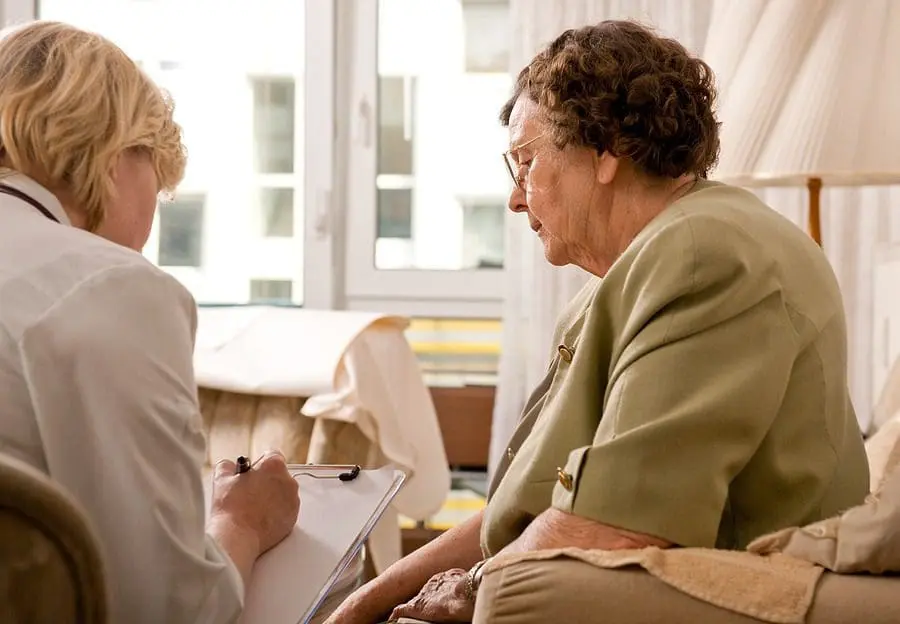Lifting a person is not the same as lifting a package. This is especially difficult when dealing with patients and even more so when dealing with seniors. Seniors suffer from intrinsic ailments attributed to their age: poor strength due to low muscle mass, arthritis, gout, joint pain, and more. These ailments not only reduce seniors’ mobility but also make lifting and transferring challenging for their caregivers in nursing homes. This is especially critical when Hoyer lift accidents occur.
The Hoyer lift accident injury lawyers at Phoenix Accident and Injury Law Firm have the knowledge and experience to help clients who have suffered injuries due to nursing home abuse or neglect, including bed transfer injuries and Hoyer lift transfer injuries.
Our offices are conveniently located in Chandler, Peoria, and North Phoenix. Contact us and we can meet in person at our nearby offices, over the phone, or via video call and discuss your case.
How Transfer and Lifting Injuries Happen
Many nursing home residents have limited mobility or cannot move on their own, meaning they rely on nursing home staff to get in and out of bed, move to or from a chair, and use the toilet or shower.
As these activities happen several times daily, the likelihood of sustaining bed transfer or lifting injuries is ongoing. The most common situations where lifting injuries can occur include:
- Helping residents sit up in bed or assisting them in and out of bed;
- When staff help residents in and out of the bathtub or shower
- Moving residents to other areas, such as the dining area or social rooms
- Assisting residents to go to physical therapy sessions or other medical treatments
- Moving residents back and forth from their bed to a wheelchair.
For lifting elderly people, in many cases, nursing homes use a tool called Hoyer lifts (also known as patient lifts) which are devices used to lift patients from a bed, chair, or wheelchair. This mobile device, which is powered by electricity or hydraulics, must be handled by specialized personnel to avoid a nursing home Hoyer lift accident.
Hoyer lift transfer injuries, such as falls, tend to happen when nursing home staff don’t follow a resident’s individualized care plan, try to move a resident with only one staff member when two are required, or simply rush a lift. Even minor lifting injuries that happen when driving a resident can later develop into serious issues as elderly individuals are fragile.
A little bump or scratch can turn into a fracture or bedsore. Nursing home staff must act with caution when transferring or lifting elderly residents and monitor or report any injuries if a Hoyer lift accident occurs.
Lifting Injuries Caused By Hoyer Lift Accidents In Nursing Homes
Mechanical or Hoyer lifts can be an effective and safe way to move and lift disabled residents when used properly by trained staff. As residents are generally lifted off the ground when using these systems, the nursing home must follow proper procedures and ensure that staff are adequately trained to operate these machines.
A nursing home Hoyer lift accident, while using these mechanical lifts can happen if the resident is not strapped in properly or not in the correct position. If a resident falls out of a lift, they could potentially suffer severe injuries, including broken or fractured bones, internal injuries, spinal injuries, or a traumatic brain injury. These types of injuries could prove fatal for elderly or disabled residents.
How Does Hoyer Lift Transfer Injuries Happen?
Avoiding Transfer and Hoyer Lift Accidents
As with other injuries in a nursing home, transfer and lifting injuries that occur can easily be avoided if safety measures are followed. Types of precautions that reduce the risk of transfer or lifting injuries include:
- Assessing each resident so a proper individualized care plan can be created and maintained, including transferring and lifting instructions
- Continually training nursing home staff with guidance on the correct procedures and techniques for lifting and transferring residents
- Making sure all equipment used to assist staff in lifting and transferring is properly inspected, maintained, and repaired
- Routinely assessing residents so their individualized care plan and transferring and lifting instructions are current
- Making nursing home staff aware of pre-existing conditions for residents that may require unique transfer protocols that might impact the staff’s ability to transfer the resident normally
Nursing home staff should always be aware of each resident’s unique and individualized care plan when moving them, as failing to ignore each resident’s needs can result in the home being liable for any injuries caused.
When is a Nursing Home Liable for a Transfer or Lift Injury?
In the event of an accident, while lifting a patient, the nursing home may be liable if negligence or lack of proper care is proven. These include:
- Negligence – Staff are shown to have failed to follow safety protocols, used improper techniques, or received poor training in lifting and transferring seniors.
- Use of Defective Equipment – If broken or incorrect equipment was used for the resident’s needs and this led to an accident, the nursing home is liable.
- Poor Planning – Not all seniors are the same and require specialized care. Failing to assess the resident’s specific condition or needs before transfer can lead to injury and the nursing home would be liable.
- Lack of Staffing or Supervision – Hoyer lift equipment requires two or more operators. Not having enough trained staff to safely assist residents can lead to injury to residents.
- Ignoring Rules – If Hoyer lifts do not follow state or federal requirements and regulations for resident care and safety, they can pose a danger to residents.

If a nursing home Hoyer lift accident occurs, the nursing home could be liable to cover medical costs, pain and suffering, or other damages. To protect your rights:
- Get medical help for the resident.
- Document what happened and report it to the facility.
- Consider consulting nursing home Hoyer lift accident lawyers.
Hoyer Lift Accident? Suspect Neglect?
Don't Wait, Get the Compensation You Deserve!
Legal Rights and Compensation for Lifting Injury Victims
Proving negligence or misconduct in a nursing home can be tricky. That’s where a Hoyer lift accident lawyer comes in.
What can Hoyer lift accident lawyers do?
- Investigate the incident: Hoyer Lift accident injury lawyers will investigate what happened, review medical records, and gather evidence to determine if the nursing home was negligent.
- Handle the legal process: A Hoyer lift accident lawyer will deal with the nursing home, insurance companies, and any legal paperwork, so you don't have to.
- Fight for fair compensation for your grievance: They will work to get you or your loved one compensated for medical expenses, pain and suffering, and other costs related to the injury sustained.
- Hold the facility accountable: If the nursing home fails to follow safety regulations or properly train staff, an attorney can help ensure they are held accountable.
How Our Attorneys Can Help with Transfer and Lift Injury Claims
You can contact us for a free consultation or read on to find out more. Our team of Hoyer lift accident injury lawyers is dedicated to seeking damages on behalf of those family members who are being abused and helping you find better accommodations for them in the nearby area. We’ve worked on several nursing home abuse cases previously in your area and take the time to understand the family’s concerns as well as the situation they believe their loved one is in.
The whole point of legal action is to regain quality of life, so we help you long-term as attorneys and short-term as your go-to people. Our familiarity with the local Phoenix courts makes us confident we can help you get the best settlement possible.

To determine how the nursing home you chose for your family is rated and to see if the home has any prior violations, check out our nursing home index. We’ve compiled all of the nursing homes in Arizona and their health code reports.
Additionally, look at our Nursing Home Glossary, an index of essential words you need to know in a nursing home abuse case, and their definitions. If you are unsure whether or not you can afford an attorney, don’t worry. We only get paid when you settle. Check out our Attorney Fees Calculator to find out more.
We provide personal injury legal services to clients in your area, including Chandler, Gilbert, Mesa, Scottsdale, Tempe, and Peoria.
If you or a loved one has been a victim of lifting injuries, contact Phoenix Accident and Injury Law Firm at any of our offices in AZ, to speak with experienced Hoyer lift accident lawyers.
Contact our office to schedule a free initial consultation by phone or in our offices!
If you or a loved one has been a victim of lifting injuries,
contact Phoenix Accident and Injury Law Firm at any of our offices in AZ, to speak with experienced Hoyer lift accident lawyers.
